Esophageal Cancer — Proton Therapy: treatment in the Best Hospitals in the World
Treatment prices are regulated by national law of the corresponding countries, but can also include additional hospital coefficients. In order to receive the individual cost calculation, please send us the request and medical records.
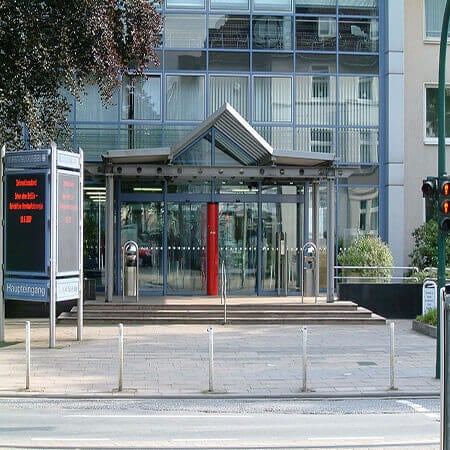
Department of Adult and Pediatric Proton Therapy
The Department of Adult and Pediatric Proton Therapy offers the full range of proton treatment and it is one of the leading and most progressive medical facilities of this kind not only in Germany, but throughout the world. The proton therapy is mostly used for the treatment of tumors of the eye, brain, spine and pelvic organs. Also, the proton therapy is an excellent treatment of tumors in children, since it has a minimal negative effect on the immature, sensitive tissues of the child’s body.


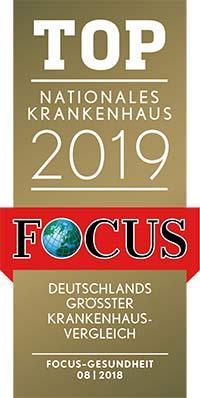

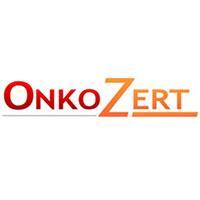

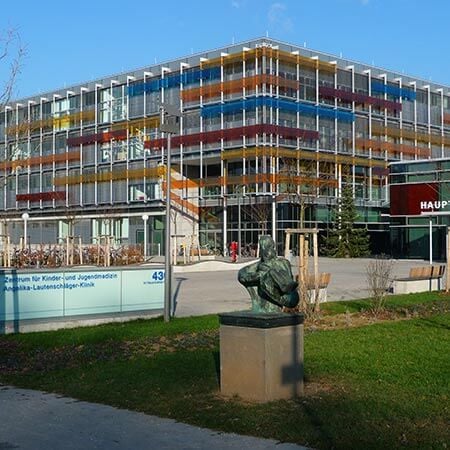
National Center for Tumor Diseases (NCT) Heidelberg
The National Center for Tumor Diseases (NCT) Heidelberg offers the full range of diagnostics and treatment of various oncological diseases. Since its foundation in 2004, the center has gained a reputation of one of the leading in Germany. The center is supported by the German Cancer Research Center (DKFZ) and the German Cancer Aid (Deutschen Krebshilfe). The center treats about 60,000 patients from 45 countries every year. Thanks to the outstanding research activities, the department has the very latest therapeutic opportunities that save lives for thousands of people.

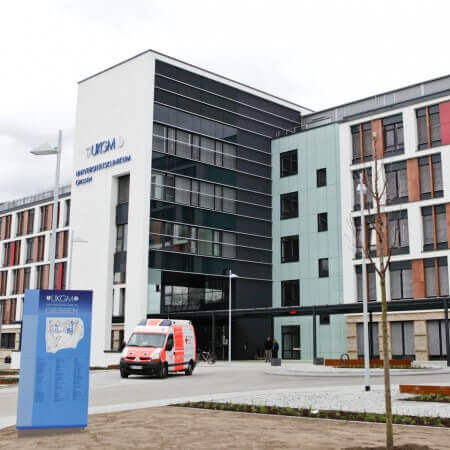
Proton Therapy Center
The Proton Therapy Center specializes in an innovative type of radiation therapy for children, namely proton therapy. The medical facility is one of four centers in Germany offering proton therapy for cancer treatment in young patients. The center has been working since October 2015 in close cooperation with the Marburg Ion Beam Therapy Center and today can boast exceptional clinical experience in the field of its competence. Proton therapy is significantly superior to conventional radiation therapy in terms of dose control, dose distribution and side effect profile. Thus, it is an excellent alternative form of cancer treatment. The main advantage of proton therapy is that it has potentially fewer immediate and long-term side effects as compared to classical radiation therapy. The harmful effects on healthy tissues during proton therapy are minimized, which is especially important for children, as their brain and body are in the growth phase. In addition, proton therapy is provided on an outpatient basis and is an absolutely painless treatment, which is also important for young patients.

Esophageal cancer is one of the most severe, prognostically unfavorable cancers. Many cases are diagnosed at the advanced stages, so the disease can rarely be cured. Standard treatment methods for esophageal cancer are surgery, irradiation, and chemotherapy. Developed countries use innovative treatment methods, which help improve outcomes and reduce the risk of complications. One of these methods is proton therapy. It irradiates healthy organs and tissues less than standard photon irradiation.
Content
- Principles of esophageal cancer treatment
- Features of proton irradiation
- In what cases can proton therapy be used
- History of proton therapy for esophageal cancer
- Protons instead of photons: less radiation for healthy tissues
- Clinical evidence for the safety of protons
- Impact on patient survival rate
- The cost of therapy
- Why is it worth undergoing treatment abroad
- Treatment in Europe with Booking Health at an affordable price
Principles of esophageal cancer treatment
The best treatment method for esophageal cancer is surgery. Only total removal of the tumor gives a person a chance to cure the cancer. Developed countries perform not only standard abdominal surgical interventions, but also minimally invasive ones. These include:
- Laparoscopic – through short incisions in the abdomen.
- Thoracoscopic – through small incisions in the thorax.
- Robot-assisted interventions – the safest ones, with the use of robotic surgical systems.
Radiation and chemotherapy are usually used at the same time after surgery. This treatment helps the doctors reduce the risk of cancer recurrence.
In some cases, radiation therapy and chemotherapy become the main methods for fighting against cancer. They are used for advanced types of cancer, as well as for localization of a tumor in the cervical esophagus.
Features of proton irradiation
Irradiation is usually carried out using photons. This treatment option is considered modern and safe as compared to the outdated 2D gamma therapy. The irradiation is now planned in 3D mode. The beams penetrate the body from different angles so that each section of healthy tissue receives a minimum dose of radiation. All of these beams converge on tumors, thereby destroying cancer cells.
However, photon irradiation is toxic. Healthy tissues are irradiated anyway, which leads to side effects and complications.
The irradiation with protons is safer. Proton beams have a very rapid energy drop at a deep penetration site known as the Bragg peak. Simply put, unlike photons, they release radiation not along the entire trajectory of movement, but only upon reaching the target. This means that they release energy already inside the tumor, practically without damaging healthy tissues.
In what cases can proton therapy be used
Proton therapy can be used in the following cases:
- After surgery to remove a malignant tumor – to reduce the risk of cancer recurrence.
- Prior to surgery – to make the tumor resectable and in the future to try to cure the cancer with a surgical technique.
- Instead of surgery – if the surgical intervention is unadvisable, then radiation becomes the main treatment method for cancer.
The main advantage of protons is that they are safer. There are many other organs around the esophagus. All of them can be affected by radiation, even with the use of modern methods of radiation therapy for cancer. Proton therapy helps the doctors reduce toxicity. It may also improve treatment outcomes, but this remains to be clarified in randomized clinical trials.
History of proton therapy for esophageal cancer
The first proton therapy in humans was performed at the University of California in Berkeley in 1954 for breast cancer metastases to the pituitary gland. In 1974, Harvard University began a successful trial devoted to studying the effectiveness of protons in chordoma and chondrosarcoma. The peculiarity of these tumors is that they are minimally sensitive to radiation. However, protons damage healthy tissues less, which makes it possible to increase the dose and overcome radioresistance. Proton therapy for uveal melanoma was later carried out for the first time at Harvard University.
However, until the 90s of the last century, protons were practically not used to irradiate organs of the the thorax, as well as the tumors of the pelvis and abdominal cavity.
For the first time in the world, patients with esophageal cancer received proton therapy in 1993 in Japan. Tsuji and colleagues irradiated 19 patients at the University of Tsukuba. Seven people were irradiated only with protons, another twelve with both protons and photons. They got comparable survival rates because they used the same radiation doses. However, the toxicity of protons was much lower.
Proton therapy for esophageal cancer seems to be superior in efficacy and safety as compared to photon radiation therapy, including its new type, IMRT (intensity modulated radiation therapy). This is confirmed by dosimetric tests. When exposed to protons, less radiation reaches healthy organs. Moreover, doctors can increase the dose of radiation to the esophagus without increasing the toxicity of the treatment. Perhaps this will lead to better survival rates. So far, this has yet to be clarified: in 2021, the third phase of a trial was launched, comparing the survival of patients after irradiation with protons and IMRT.
Protons instead of photons: less radiation for healthy tissues
The esophagus is located in the center of the thorax. The lungs and the heart are located close to it. The lungs are very sensitive to radiation. They often suffer from conventional photon irradiation, so pneumonitis is the most common complication in patients undergoing radiation therapy. This term means pneumonia, but it is caused not due to bacteria or viruses, but due to radiation.
Dosimetric studies show that proton beam therapy for esophageal cancer is less toxic than photon beam therapy. It delivers more radiation to the tumor and less to the lungs. In modern medicine, a dosimetric plan is calculated for each patient based on computed tomography. Therefore, even before starting treatment, the doctor can determine whether protons will have a safety advantage for you over photons.
Since the 1990s, dozens of dosimetric studies have already been carried out showing clear advantages of protons for cancer treatment. With this irradiation technique, doctors manage to reduce the load not only on the lungs, but also on the heart.
One of the largest studies was carried out by Shiraishi. The authors analyzed data from 727 esophageal cancer patients. They compared proton therapy and IMRT regimens. As a result, scientists have proved that the dose to the heart is lower when using protons. In addition, scanning with an active beam is safer than using passive scattering technology.
Active beam scanning or intensity modulated proton therapy is a relatively new type of proton irradiation for cancer, which appeared only in the 21st century. This is the technology preferred by most newly opened proton therapy centers.
The technology for irradiating cancer with photons is also constantly evolving. In addition to IMRT, many hospitals use VMAT – volumetric modulated arc therapy. It makes therapy even faster and safer. However, Warren's research proved proton therapy to be better than VMAT. The use of protons reduces the load on the spine and spinal cord.
Clinical evidence for the safety of protons
The above mentioned studies are dosimetric. This means that they show the advantages of protons "in theory". It is expected that there will be fewer side effects because the lungs, heart, spine, spinal cord, or other organs receive less radiation. This seems logical, but clinical evidence of less toxicity is still needed to confidently recommend protons over photons. Such evidence has been obtained many times.
Makishima's research work at the University of Tsukuba showed that proton radiation therapy for esophageal cancer is associated with a lower incidence of pneumonitis and pericardial effusion (fluid accumulation in the pericardial cavity). Wang and colleagues at Anderson Cancer Center retrospectively (after treatment for esophageal cancer) analyzed data from 444 patients treated with protons and photons. As it turned out, protons not only cause fewer complications, but are also associated with a reduced period of a hospital stay.
Esophageal cancer patients often receive both radiation therapy and chemotherapy at the same time. For such cases, proton therapy has also proven to be safer. In addition to reducing the risk of major post-radiation complications, it also showed a decrease in the severity of lymphocytopenia, which is a decrease in the number of immune blood cells due to suppression of bone marrow function. Shiraishi's research at the Anderson Cancer Center showed that none of the patients who received proton irradiation developed grade 4 lymphopenia. The number of lymphocytes in the blood is an important factor affecting survival rate of patients.
Garant and his team at the Mayo Clinic have proven that proton therapy for esophageal cancer results in a better quality of life for patients compared to using photons.
All these researches are retrospective, namely, based on an analysis of the results of patients who were treated earlier. To date, there has been only one prospective (pending data) randomized clinical trial comparing the toxicity of proton irradiation and IMRT. It was discontinued ahead of schedule due to the obvious benefits of proton beam therapy. IMRT was significantly more toxic.
Impact on patient survival rate
Retrospective studies have already revealed the evidence that protons provide the best survival rates for patients with esophageal cancer. The best effect can be obtained due to the higher dose of radiation. When using photons, doctors cannot deliver a very high dose to the tumor, as it will damage healthy tissue as well. Nevertheless, protons are safer. Doctors can increase the amount of radiation to the tumor without increasing the toxicity of the treatment. In addition, the reduction in toxicity contributes to an increase in life expectancy.
For some cancer patients, high-quality radiation therapy means not only an increase in life expectancy, but also the possibility of a cure for cancer. It is often combined with chemotherapy for neoadjuvant (preoperative) treatment. As a result of radiation therapy, the tumor can be reduced in size so that it can be totally removed.
The cost of therapy
Proton radiation therapy costs on average 3 times more than photon radiation therapy. With all the advantages of the technique, this hinders its widespread use in oncology. In addition, this is the reason for the small number of randomized clinical trials: they are too expensive to perform.
The prices are expected to decline in the future. A new proton therapy technology using a laser is currently being developed. To accelerate protons, specialists use synchrotrons or cyclotrons, which are very expensive. However, the procedure will be cheaper with laser acceleration.
After solving the cost problem, proton beam therapy can supplant photons. Just like it happened a few years ago when linear accelerators replaced gamma therapy with cobalt-60.
Why is it worth undergoing treatment abroad
You can get help at any stage of esophageal cancer abroad. At the early stages, proton therapy, combined with other methods, can help cure the disease. At the advanced stages, it is possible to increase the life expectancy of patients by several years and improve the quality of life by reducing symptoms.
The main reasons why people go abroad to undergo treatment for esophageal cancer with protons are:
- Proton therapy is not available in all countries. The number of centers is small even in states with a developed health care system.
- New proton therapy methods are not available everywhere. Pencil beam scanning technology is only used in newly opened centers. It provides even safer irradiation, especially for complex tumors.
- Proton therapy is expensive. Especially in the countries of North America and Japan, where the most centers are located. The therapy is cheaper in Europe. Therefore, many patients visit European countries to save money. In addition, residents of Western Europe visit the countries of Eastern Europe – the Czech Republic, Russia, as prices are even lower here.
Treatment in Europe with Booking Health at an affordable price
To undergo proton therapy for esophageal cancer in one of the European hospitals, please use the services of the Booking Health company. On our website, you can see the cost of treatment in different clinics, compare prices and book a medical care program at a favorable price. Esophageal cancer treatment using proton therapy in a European hospital will be easier and faster for you, and the cost of treatment will be lower.
Please leave your request on the Booking Health website. Our employee will contact you and provide a consultation about treatment in Europe. Booking Health will take care of the organization of your trip. We will provide the following benefits for you:
- We will select a hospital for treatment in Europe, whose doctors use proton therapy for esophageal cancer treatment.
- We will help you overcome the language barrier, establish communication with your attending physician.
- We will reduce the waiting time for the start of the medical care program and book a doctor's appointment on the most suitable dates.
- We will reduce the price. The cost of treatment in European hospitals will be lower due to the lack of additional coefficients for foreign patients.
- We will take care of all organizational issues: documents for entering the country, transfer from the airport, hotel, interpreting services, etc.
- We will prepare a program and translate medical documents. You do not have to repeat the previously performed diagnostic procedures.
- We will provide communication with the hospital after treatment in Europe.
- We will organize additional diagnostic examinations and treatment in a European hospital, if necessary.
- We will buy medicines abroad and forward them to your native country.
- We will help you keep in touch with the hospital and the doctor after treatment in Europe.
You will receive treatment from the best doctors in the world. The Booking Health employees will help reduce the cost of treatment and take care of all organizational issues, and you will only have to focus on restoring your health.
Authors: Dr. Nadezhda Ivanisova, Dr. Sergey Pashchenko

